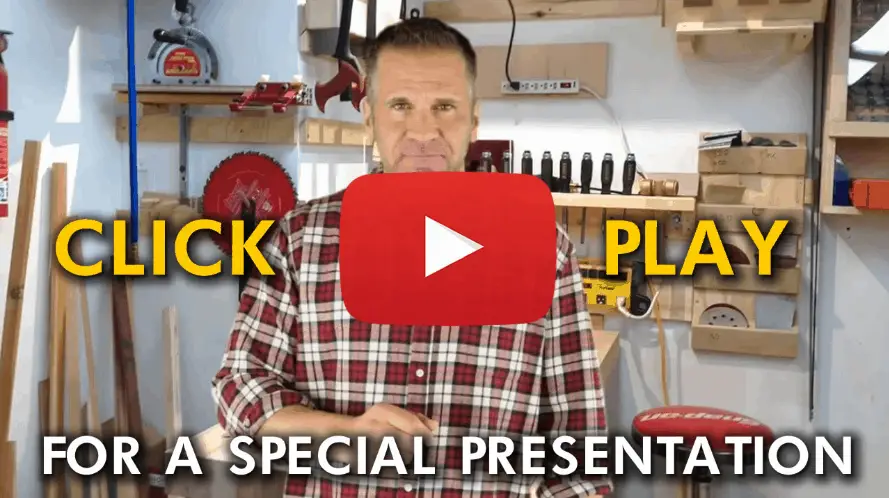Subscribe to The Honest Carpenter on YouTube
In this article, the Honest Carpenter, Ethan James, shares his top 11 drilling tips and tricks, along with common mistakes to avoid. Before diving into the tips, he emphasizes the importance of pre-drilling to prevent splitting and make driving fasteners easier. While he uses an electric hand drill in the video, many of the tips can also apply to a drill press or even driving a screw by hand.
Tip number one is to start with a punch to create a precise hole placement and prevent drill bits from wandering. Tip number two is to avoid using too much force when drilling, as drill bits are designed to cut through material without excessive pressure. Tip number three is to clear out the swarf periodically to ensure effective drilling. Tip number four is to step up sizes gradually when drilling larger holes to prevent excessive friction and tearing of wood grain.
To prevent splintering, Tip number five suggests using tape to stabilize the wood grain, while Tip number six advises using high speeds for drilling wood and slow speeds for drilling metal. Tip number seven emphasizes using slow speeds and pressure when drilling metal to prevent skipping over the surface and dulling the bit. Tip number eight suggests using the eyeball method to determine the appropriate bit diameter for a fastener.
When drilling at an angle, Tip number ten recommends starting vertically and then tilting the tool down to drive at an angle. The article concludes with a discussion of the importance of avoiding common drilling mistakes and taking pre-drilling considerations into account.
Key Takeaways
- Pre-drilling is essential to prevent splitting and make driving fasteners easier.
- Gradually stepping up drill bit sizes and using tape to stabilize wood grain can prevent tearing and splintering.
- Using high speeds for drilling wood and slow speeds for drilling metal can result in cleaner holes.
Pre-Drilling Considerations
When it comes to drilling, there are several tips and tricks to keep in mind to ensure a successful outcome. Ethan James, from The Honest Carpenter, shares 11 drilling tips and tricks as well as some mistakes to avoid. Before starting to drill, it is important to consider a few things.
Firstly, pre-drilling is always a good idea before driving a fastener. Pre-drilling removes some wood and gives the screw some room to enter the material. This prevents splitting and makes driving the fastener easier.
Secondly, it is important to note that Ethan James is using an electric hand drill in this video, not a drill press. However, a good number of these tips can apply to a drill press and can even help if one has to drive a screw by hand.
By following these pre-drilling considerations, one can ensure a smoother drilling process and avoid common mistakes.
Want To Improve Your Woodworking?
Discover 1,000 Hours Of Step-By-Step Woodworking Videos

It’s called Woodwork101. A database of detailed videos and blueprints in crystal clear, mouth-watering HD that will take you by the hand and show you that DIY home projects done the right way are easy, fun, and always of top quality… turning dream into reality in a heart-beat. Getting you that perfect build each and every time.
Essential Drilling Tips
Starting with a Punch
Drill bits have a tendency to wander when they’re getting started. To avoid this, the tip suggests starting by punching the hole location. This creates a perfect place for the drill bit to bite in and get started without wandering.
Avoiding Excessive Force
Drill bits should be able to do their job without too much force. If a drill is really fighting you, it’s probably a sign that the bit is dull. The solution is to change it out or try the next couple of tricks.
Clearing Out the Swarf
Drill bits are designed to remove wood while boring a hole. The problem is the drill bit can’t always clear swarf when the bit is embedded. You need to back the drill bit out periodically to remove the waste wood.
Stepping Up Sizes
Another reason drilling may be difficult is that you’re trying to drill too big of a hole too quickly. You can start with narrower drill bits and work your way up in diameter. This makes drilling each pass easier and prevents wood grain from tearing out due to excessive friction.
Using Tape to Prevent Splintering
The cutting action of a drill bit spinning can tear up wood grain and cause unsightly scarring. To prevent this, put a piece of painters tape over the place where you’re planning to drill. The tape adhesive will stabilize the wood grain beneath and prevent the drill bit from doing too much damage as it bores its way through the wood.
Controlling Speed Based on Material
High speeds are recommended for drilling wood. The flutes of a drill bit can act as Paul’s that rip wood grain when the bit is moving too slowly. Slow speeds and pressure are recommended for drilling metal.
Eyeballing Method for Bit Size
To determine the drill bit size, take one of the fasteners you have to drive and hold it out in front of you. Take a bit and hold it closely in front of the screw so they’re basically touching and in line with each other.
Hogging Out Material
If a fastener doesn’t want to fit into a pre-drilled hole, but you don’t have the next size up drill bit, you can sometimes get away with running the same drill bit through the hole several times. This slightly enlarges the hole in the process.
Toenail Drilling
Toenail drilling is just driving a fastener at an angle, but drilling at an angle can be tricky because the drill bit wants to run around everywhere. The solution is to start by standing the tool up and drilling vertically at first. This lets the drill bit bite into the material and get set.
Note: These are just a handful of the many drilling tips and tricks that exist.
[Video] 3 Most Common Mistakes
When Setting Up Shop

A woodworking friend of mine shared this video by Ralph Chapman with me that helped him set up his workshop.
The video explains the benefits of Ralph Chapman’s guide about setting up an affordable workshop and avoiding the most common mistakes offers to anyone interested in woodworking.
Common Drilling Mistakes to Avoid
When it comes to drilling, there are several mistakes that can be made. Here are some of the most common mistakes to avoid:
- Not starting with a punch: Drill bits have a tendency to wander when they are getting started. To avoid this, it is recommended to start with a punch to create a perfect place for the drill bit to bite in and get started without wandering.
- Using too much force: Drill bits should be able to do their job without too much force. If a drill is fighting you, it is probably a sign that the bit is dull and needs to be changed.
- Failing to clear out the swarf: Drill bits are designed to remove wood while boring a hole. The problem is that the drill bit can’t always clear swarf when the bit is embedded. It is recommended to back the drill bit out periodically to remove the waste wood.
- Trying to drill too big of a hole too quickly: Larger drill bits have more surface area and more material to clear. It is recommended to start with narrower drill bits and work your way up in diameter.
- Not using tape to prevent splintering: The cutting action of a drill bit spinning can tear up wood grain and cause unsightly scarring. It is recommended to put a piece of painters tape over the place where you are planning to drill to prevent tear out.
- Not using high speeds for drilling wood: High speeds will give you a much cleaner hole when drilling wood.
- Not using slow speeds for drilling metal: The key to drilling metal is using slow speeds and pressure.
- Not using the eyeball method to determine the right bit diameter: It is recommended to take one of the fasteners you have to drive and hold it out in front of you to determine the right bit diameter.
- Not hogging out material: Hogging out is a technique used to remove more material by aggressive reaming. It is recommended to run the same drill bit through the hole several times to slightly enlarge it in the process.
- Not doing toenail drilling correctly: Toenail drilling is just driving a fastener at an angle but drilling at an angle can be tricky. It is recommended to start by standing the tool up and drilling vertically at first to get set before tilting the tool down and driving at an angle.
Want To Improve Your Woodworking?
Discover 1,000 Hours Of Step-By-Step Woodworking Videos

It’s called Woodwork101. A database of detailed videos and blueprints in crystal clear, mouth-watering HD that will take you by the hand and show you that DIY home projects done the right way are easy, fun, and always of top quality… turning dream into reality in a heart-beat. Getting you that perfect build each and every time.
